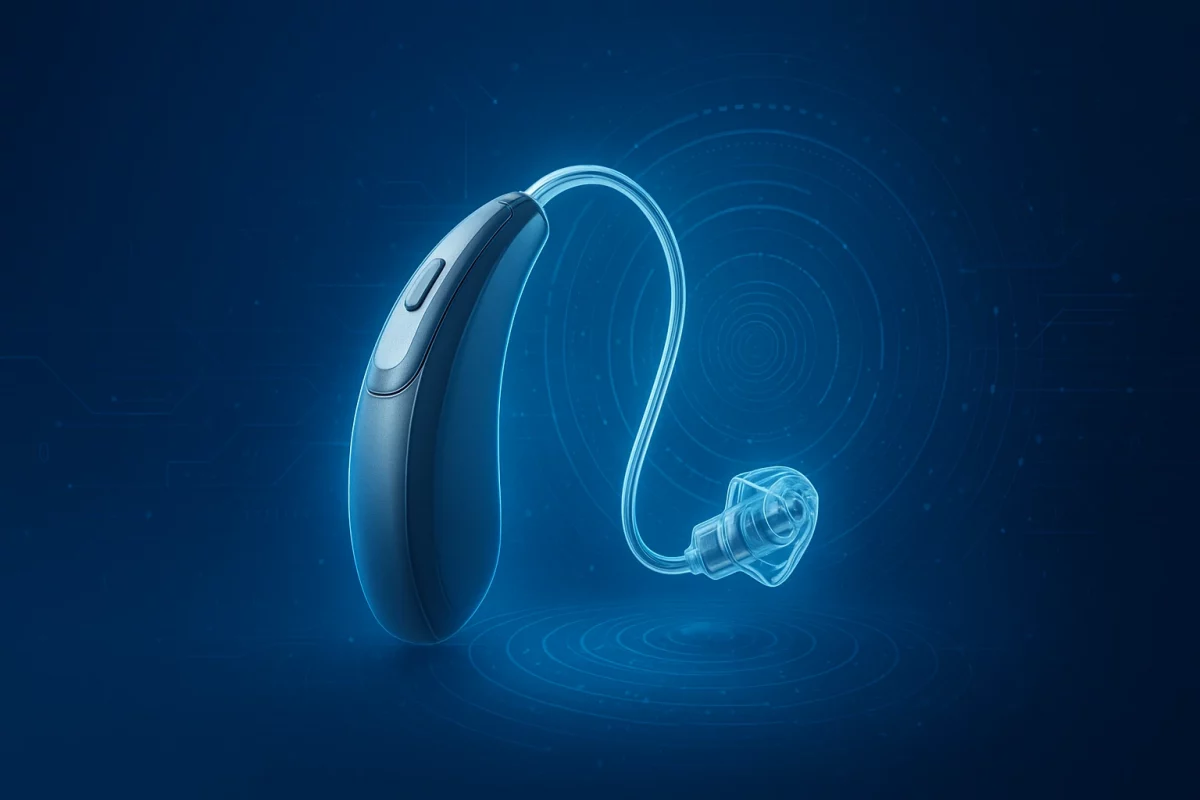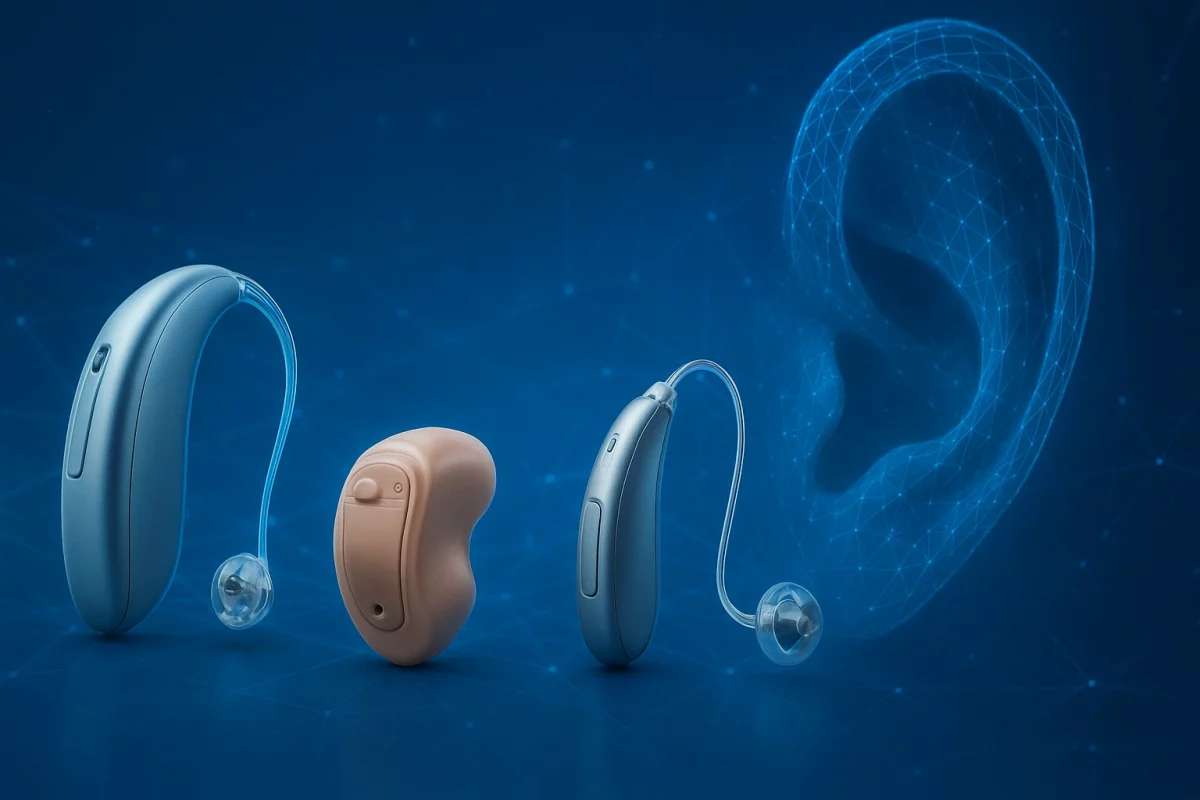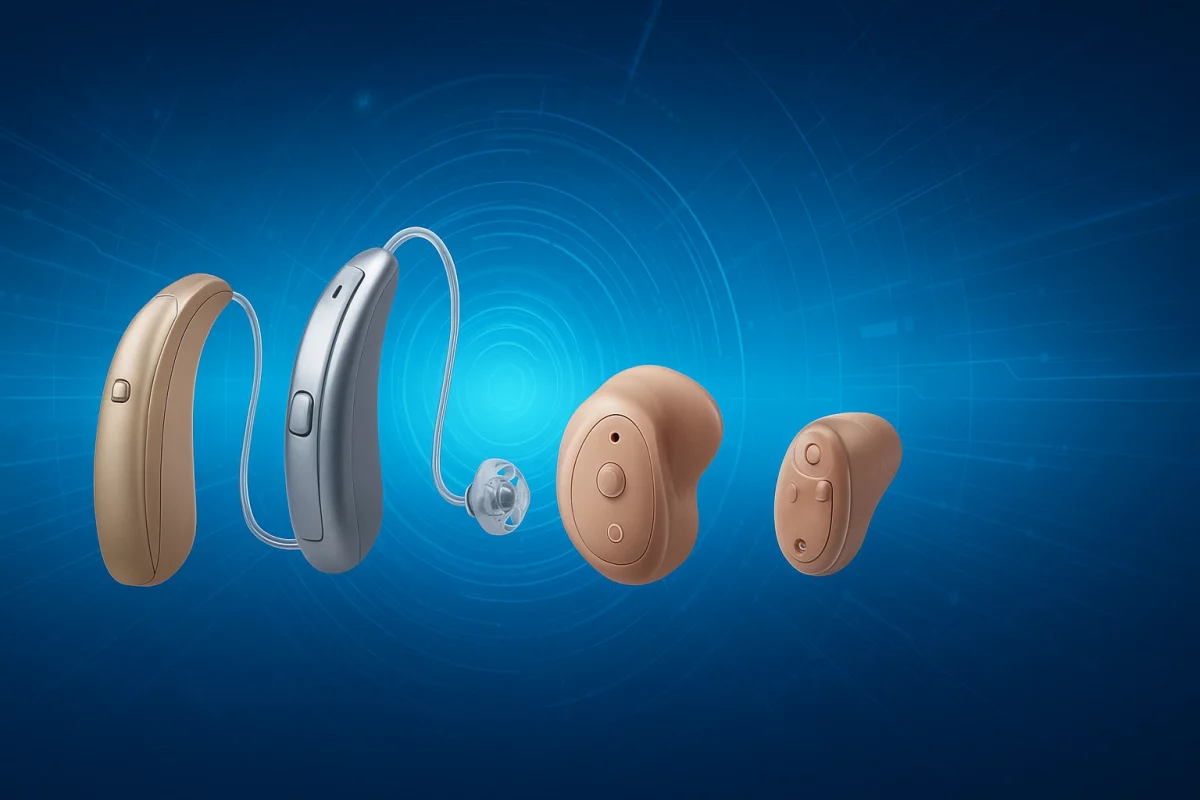How Digital Hearing Aids Work
Digital hearing aid technology’s superiority over traditional analogue hearing aids isn’t just what it can do with sounds, but how much better it does it. By converting the incoming signals into computerised ‘bits,’ they can be processed, or manipulated extremely fast and efficiently in many complex ways using mathematical formulas known as algorithms. This gives digital signal processors (DSP) tremendous speed and agility to recognize sound’s key ingredients.
Like a graphic equalizer in some audio systems, algorithms can continually divide sounds into frequency channels. These help preserve and emphasize the higher frequencies containing vital consonant sounds in speech the “c” and “t” sounds in “cat” – over the distracting rumble of low-frequency noise.
Algorithms also manage noise by its duration. While speech sounds’ intensity can change radically in a millisecond, noise is more acoustically stable over a comparatively longer time. Using time, DSP precisely reduces the levels of continuous sounds like traffic noise and household appliances. And it instantaneously readjusts when changes occur, restoring amplification when shorter duration sounds are detected.
That same sensitivity is also useful in quiet surroundings. Utilising an audio technique called expansion, the digital algorithm senses the consistency of softer environmental sounds from ventilation systems and appliances so as to not make these sounds intrusive.

It automatically reduces amplification in the appropriate frequency range, immediately restoring proper levels when the sound pattern changes.
Digital algorithms can also minimize and eliminate the onset of feedback, a common nemesis to hearing instrument use. Within its elaborate frequency channel network, the algorithm detects the elements of feedback before they become audible. It then reduces levels in just those discreet channels, with no noticeable effect on perceived volume levels.
The precision and flexibility of digital technology also give me the ability to more accurately tailor your amplification for the best possible match to your listening and lifestyle needs.
Cutting-Edge Hearing Aids
The world of hearing aids is advancing rapidly, driven by breakthroughs in technology that deliver unprecedented sound clarity, user convenience, and lifestyle integration. From artificial intelligence (AI) to advanced connectivity, modern hearing aids are redefining how individuals with hearing loss engage with their surroundings while promoting overall wellness.
What’s New in Hearing Aid Technology
Gone are the days when hearing aids were simple amplification devices. Today’s models boast sleek, nearly invisible designs, long-lasting rechargeable batteries, and seamless wireless connectivity. These advancements not only enhance hearing but also transform how users interact with their environments, offering a more connected and enriched experience.
AI-Powered Hearing Solutions
Artificial intelligence is at the forefront of modern hearing aids, enabling devices to process sound in ways that mirror the human brain. By analyzing surrounding audio in real time, AI-driven hearing aids automatically adjust to optimize clarity in diverse settings, from quiet rooms to bustling cafes.
These smart devices also adapt to user preferences over time. By learning from your daily listening habits, AI hearing aids fine-tune settings to match your unique needs, ensuring a personalised experience that improves with use. This adaptability makes challenging sound environments—like crowded gatherings—more manageable, delivering crisp, natural audio.

Bluetooth Low Energy (LE) Connectivity
Bluetooth technology has evolved with the introduction of Bluetooth Low Energy (LE), a game-changer for hearing aids. This energy-efficient system allows seamless connections to smartphones, tablets, and other devices, enabling users to stream calls, music, or podcasts directly to their hearing aids with minimal battery drain.
The stable, high-quality connection ensures uninterrupted audio, making it easier to stay connected on the go without worrying about power consumption.
Auracast™: The Future of Audio Broadcasting
Auracast™ represents the next wave of wireless audio technology, designed to enhance shared listening experiences. This innovative system allows public audio sources—such as those in theaters, airports, or gyms—to broadcast sound directly to compatible hearing aids, connecting an unlimited number of devices with ease.
With Auracast, users can enjoy clear, reliable audio streams for announcements, presentations, or entertainment in public spaces.
Sustainable Power and Green Technology
Forget single-use batteries. Lately, rechargeable hearing aids offer extended battery life, lasting a full day on a single charge. With fast-charging options, they’re ideal for busy schedules. Manufacturers are also prioritising sustainability, using environmentally friendly materials and adopting eco-conscious production methods to reduce their carbon footprint while maintaining top-notch performance.
Time to Upgrade Your Hearing Experience?
If your hearing aids are a few years old, you might be missing out on cutting-edge advancements. The latest models deliver superior sound clarity, enhanced comfort, and smart features designed to complement your lifestyle.

Explore how the latest innovations can help you hear better and live with greater confidence.
Contact me for expert hearing aid advice and unbeatable prices in Scotland.
Call me today on 01506 420519
Try Hearing Aids Before You Buy
No Obligation trial allows you to be completely sure about your purchase before making it.




